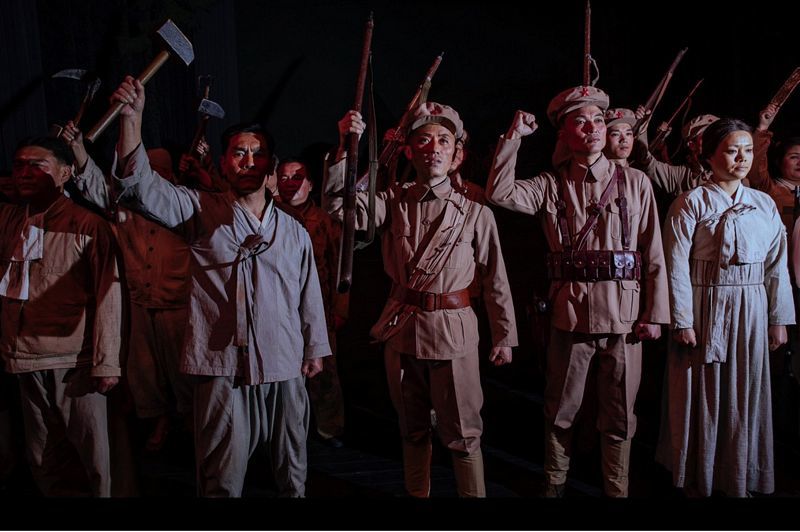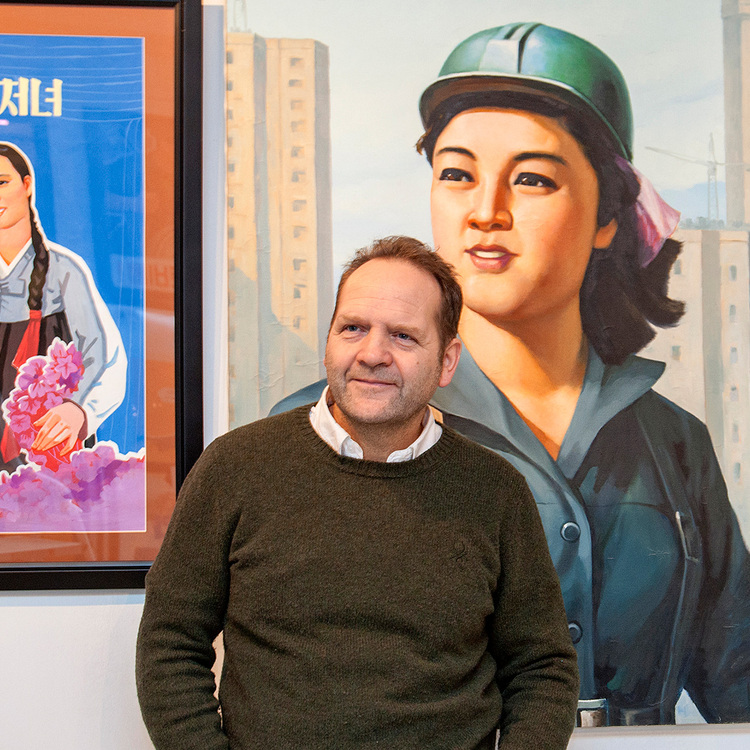Facial hair is destiny: clean-shaven men are heroic. Men with moustaches are evil; men with chin beards always seem like they’re imparting folksy wisdom.
North Korean revolutionary opera is characterized by a highly melodramatic style and reoccurring themes of patriotism and glorification of Juche, President Kim Il Sung and the working people.
This, as well as a focus on socialist realist themes.

Photographs copyright Matjaž Tančič with Koryo Studio (this work will be exhbitied in 2021 please contact us for details)
On the Art of Opera
The fundamental principles of North Korean revolutionary opera were dictated by Kim Jong Il in his speech On the Art of Opera.
In Kim Jong Il’s treatise ‘On the Art of Opera’ it states that the Revolutionary Operas were written to encourage the people in carrying on the tasks of revolution and construction. Whereas traditional opera was seen to cater to the ‘exploitative classes’.
The Five Great Revolutionary Operas which all had in some shape or form the involvement of the North Korean leaders Kim Il Sung and Kim Jong Il have snappy titles;
The first revolutionary opera in North Korea, Sea of Blood, premiered at the Pyongyang Grand Theatre in July 1971.
In September 1974, Kim Jong-Il gave a Talk to Creative Workers in the Field of Art and Literature entitled "On the Art of Opera", in which he described the most important principles of North Korean opera.
According to Kim, because opera combines music, dance, poetry, and theatre, it "constitutes a criterion for evaluating the level of a country".
A good revolutionary opera must reflect the time it was produced in, and be guided "strictly by revolutionary principles". Revolutionary opera must also be emotionally affecting to the audience and be composed of beautifully poetic words and music.
North Korean sees three main innovations in Revolutionary Opera;
1. Three-dimensional stage settings
2. Stanzaic songs based on peasant-folk music
3. Pangchang (an off-stage singing chorus)
Three-Dimensional Stage Settings
Sets and backdrops must be realistic and three-dimensional.
They are typically lavish and elaborate, eschewing abstraction for the reproduction of real-life elements.
Sets must not only be a realistic approximation of the location, but also "describe the personality of the character living and working in that society", according to On the Art of Opera, the same principles are applied to makeup, props, and costuming.
Stanzaic Songs
Most operas are set in the formative period of the DPRK. Either the Japanese occupation of Korea or the Korean War.
The songs of North Korean revolutionary opera, unlike those of Western opera, are stanzaic in form, with main melodies often being repeated. This is in keeping with the aims of North Korean opera to be "a true art for the people", as Kim Jong-Il states in On the Art of Opera.
In order for opera to be able to reach the maximum number of people, throughout all of North Korea and beyond, the songs must be memorable and easily repeated, "composed in such a way that anybody can understand and sing", according to Kim.
Pangchang
Also central to North Korean revolutionary opera is the pangchang, or off-stage song.
This works by describing the situation of the characters and their innermost thoughts and feelings. For example, in Sea of Blood, the pangchang "The Mother Learns to Read and Write" is sung from offstage as the actor playing the mother is onstage performing the actions described. The song comments on the action and sings the praises of the mother as an ideal socialist and North Korean heroine.
Kim Jong-Il describes the pangchang as "a powerful means of portrayal not present in the operas of the past".
Aspects of North Korean Revolutionary Opera
North Korean revolutionary opera makes heavy use of dance as well as singing, with performances often incorporating elaborate dances in the most important scenes to show both the action on stage and the characters' feelings.
These dances are typically based on a long tradition of Korean folk dance, one of the few examples of a folk tradition that has remained relatively intact since the formation of North Korea.
North Korean revolutionary opera is typically performed with a mix of Western classical instruments and traditional Korean instruments, a style christened the "combined orchestra" (paehap kwanhydnak).
In this, it is important that Korean instruments take precedence over Western ones, in order to ensure a distinctly Korean opera and to stay aligned with the values of the Juche ideology.
A Dummies Guide to Watching the North Korean Revolutionary Opera
Facial hair is destiny: clean-shaven men are heroic.
Men with moustaches are evil; men with chin beards always seem like they’re imparting folksy wisdom.
Women often suffer for the majority of the opera, and rarely seem to have much agency; they wail and moan and wear beautiful dresses.
Every opera has a dream scene with high flutes.
